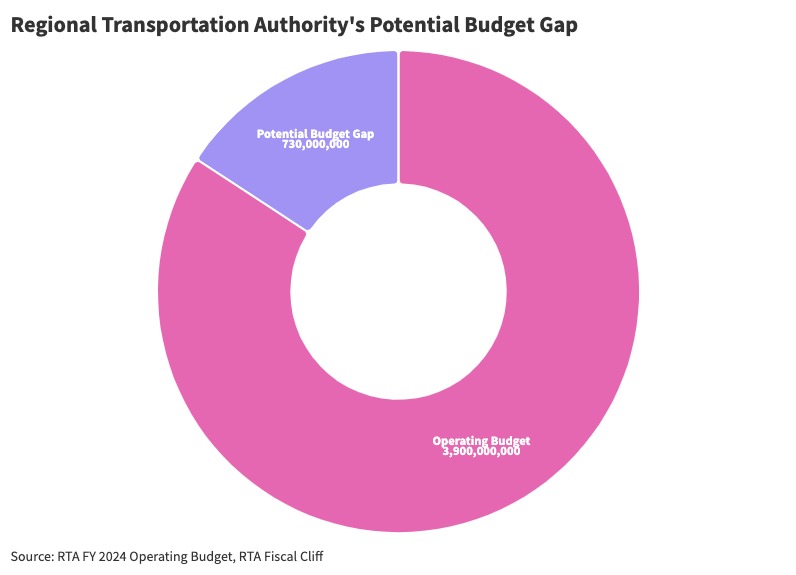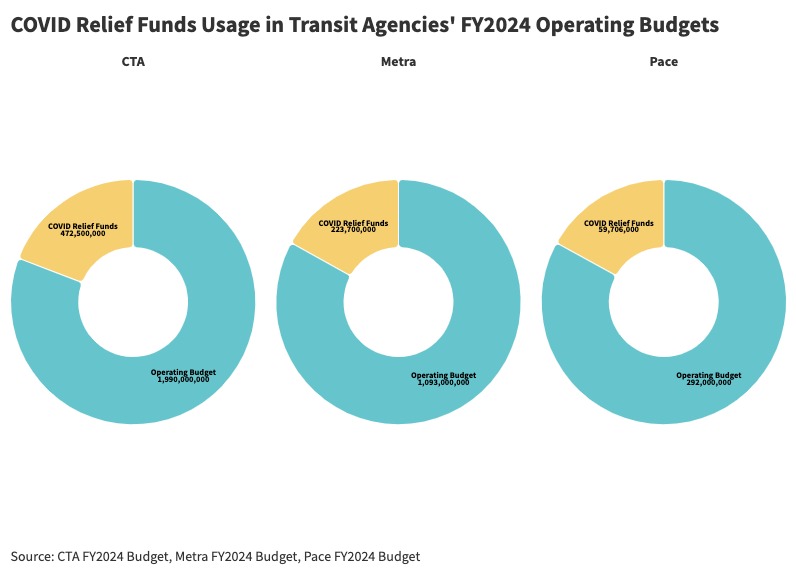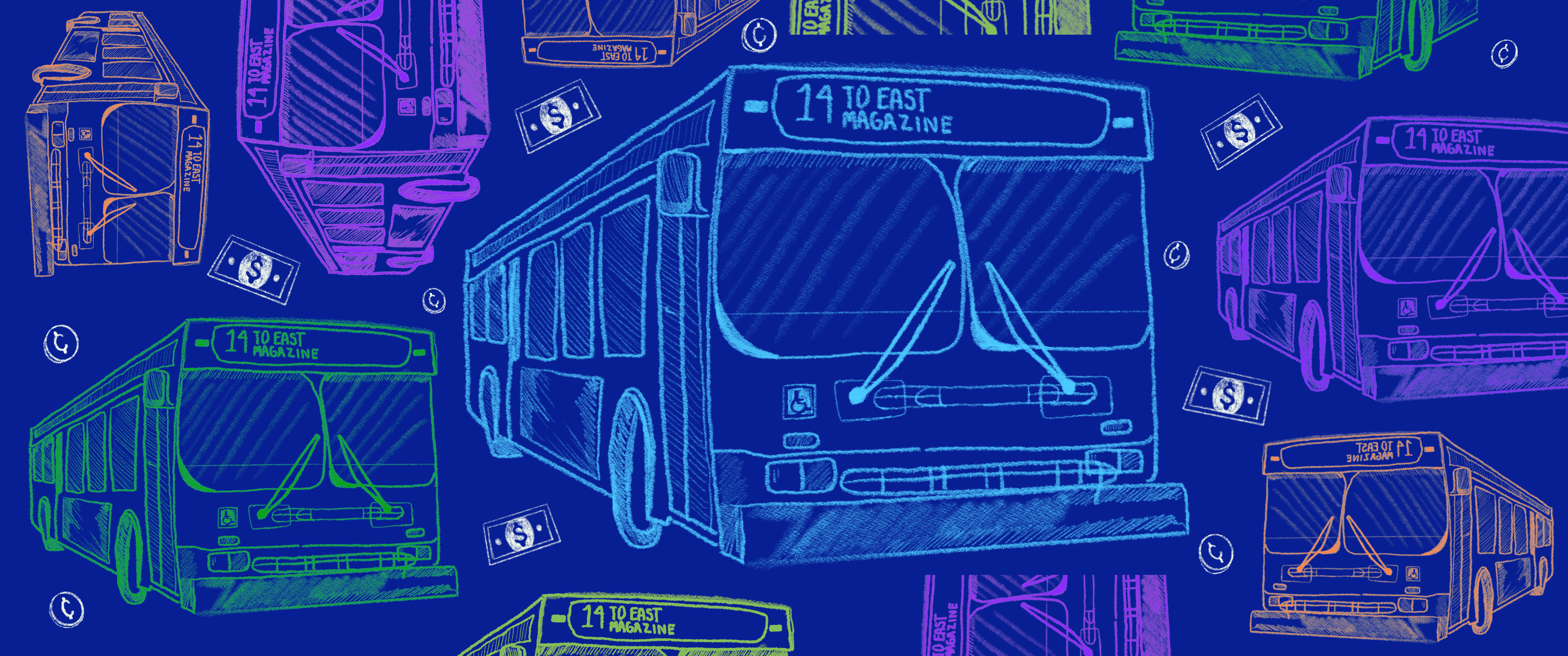Metropolitan Mobility Authority Act Set to Enhance Rider Experience
Illinois lawmakers proposed a bill in April that, if passed, would form the Metropolitan Mobility Authority (MMA), a unified transportation entity replacing northeastern Illinois’ current transit operations, including the Chicago Transit Authority (CTA), Metra and Pace.
Joe Schwieterman, director of the Chaddick Institute for Metropolitan Development and a professor in DePaul University’s School for Public Service, Department of Public Policy and Sustainable Urban Development, explained that the current system’s fragmentation of individual agencies has made it difficult to achieve cohesive transportation operations.

A CTA bus travels down Clark Street in Lincoln Park. Photo by Erin Gessert
“The lack of integration between our different transit networks has been a real disappointment for many. So the CTA marches to a different drummer than Metra and Pace,” Schwieterman said. “The CTA is more or less controlled by the city of Chicago. Metra is more or less controlled by the suburbs. So you can understand why cooperation becomes difficult.”
Schwieterman said that the merger has the potential to create a more integrated and unified transportation system for Illinoisians.
“We will start making it easier for people to live and build a life around transit by improving connections, thinking more strategically about how we invest, and being more open to trying new strategies for the region as a whole. And that’s hard to do now because you got three different executive directors, and they all answer to different boards,” Schwieterman said.
Illinois State Representative Kam Buckner (D-26th), who introduced the Metropolitan Mobility Authority Act bill on April 30, 2024, emphasized that the current system’s “siloed approach” creates inefficiencies for riders and cost redundancies for the agencies themselves.
“Unfortunately, right now, all of our agencies, especially when it comes to funding, don’t collaborate, but they compete, which I think leaves the people – the commuters, the customers – in a less advantageous position,” Buckner said.
Buckner explained that there is a push to increase the electrification of bus fleets, yet both CTA and Pace are attempting these increases on their own. A merger could reduce the costs for each agency trying to achieve electrification because they would be working together.
Buckner said a priority of this proposed merger is to provide improved services for riders, such as more collaboration in scheduling services.
“I think the thing that matters the most for the people is the service improvements, the integrated scheduling, where you’re not siloed coordinating throughout the service board agencies, reducing wait times, improving connections between different transit modes and better allocating resources so that the places that need the most service get them,” Buckner said.
The MMA also aims to accomplish universal fare integration, meaning that riders would have an efficient system to transfer between the various modes of transportation. Currently, if a rider wants to take the CTA bus to connect to a Metra train, they must purchase a fare for each ride.
“Right now, there’s no easy way to transfer from Metra to Pace to CTA. Unfortunately, there’s not a single fare system. And if your Ventra app goes down, then you’re stuck trying to figure out how to make things work. So a unified ticketing system and a seamless transfer system is also a benefit,” Buckner said.
In late June, the three transportation agencies said they would soon start a six-month pilot program offering a regional day pass that would let riders use any of the three services, according to Block Club Chicago.
One motivating reason for drafting this legislation is the fiscal cliff, which is expected to hit transit companies in 2026, as COVID-19 pandemic relief funds run out.
The Regional Transportation Authority (RTA), which oversees CTA, Metra and Pace and would be replaced by the MMA if the legislation passes, stated that in 2020 and 2021, the agency received $3.5 billion from the federal government because fewer people were taking public transportation due to the pandemic. However, as years pass and ridership has yet to return to pre-pandemic levels, the funding will subside.

The RTA stated that there is potential to face a budget gap of $730 million starting in 2026. This gap represents 18.6% of their 2024 operating budget of $3.9 billion.
Additionally, the fiscal year (FY) 2024 budget reports for CTA, Metra and Pace show that 23.7% of CTA’s operating budget, 20.5% of Metra’s and 20.4% of Pace’s are covered through these relief funds.

While this potential merger could financially help the agencies through fewer cost redundancies, transportation unions may not welcome this merger with open arms, according to John Keeley, an economics professor at DePaul University. Keeley teaches a course in urban economics which focuses on Chicago’s transportation system.
“The way that unions have held on principally is through government and public unions,” Keeley said. “And now… if you’re going to merge Metra and RTA and CTA, are they covered by the same laws and the same pension boards and the same oversight?”
When Keith Hill, President and Business Agent of Transit Union ATU Local 241, which represents over 6,000 transit workers, learned of the legislation, his initial concerns centered around the future of workers’ pensions.
“It sends me in a lot of worries since we had a lot of worries about the service we provide, the pension that we’re promised, the overall work that we do from our pay to our retirement, from start to finish,” Hill said.
In section 3.03, “Transfer of employees and collective bargaining rights,” the legislation states that the MMA would determine the number of employees needed to provide public transportation on a consolidated basis, yet current employees who have pensions and other retirement packages would still be eligible to keep them.
Buckner said that no current workers’ pensions would be in jeopardy, yet there could be “new streamlined processes” for new hires, meaning that potential new employees’ pensions could look differently than what is in place for current workers.
In order to make public transportation more accessible for riders, Hill says that the voices of transit and union workers should be at the forefront of conversations with decision-makers.
“Uber, Lyft should not be a person’s first choice. It should be public transportation, whether it’s Pace, CTA or Metra. It should be accessible, reliable and affordable to them, and it should be easy for them to maneuver between each system,” Hill said. “So I think before they re-approach this, I would like to see them talk to organized labor a lot more – including talking to the riding public a lot more. Nobody knows transit like we know [it].”
A clear-cut plan for how the merger would truly impact employees and day-to-day operations has yet to be fully developed, as the last action surrounding the legislation was its filing at the end of April. However, Buckner echoed the sentiment that communicating with transit workers is key to ensuring that the potential merger would be a smooth transition.
“We should be listening to the folks who are doing their work to make sure that we are giving them the opportunity to do it in a seamless way,” Buckner said.
Header by Alexis Phelps




NO COMMENT